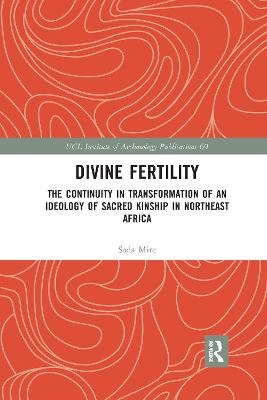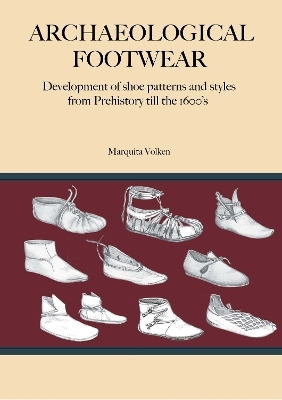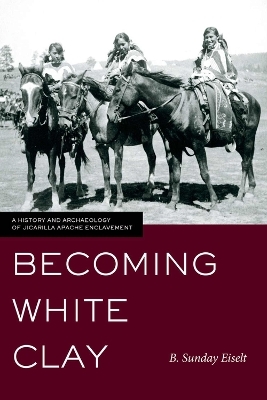
Divine Fertility
Routledge (Verlag)
978-1-032-17485-3 (ISBN)
This book uniquely explores the impact of indigenous ideology and thought on everyday life in Northeast Africa. Furthermore, in highlighting the diversity in pre-Christian, pre-Islamic regional beliefs and practices that extend beyond the simplistic political arguments of the current dominant narratives, the study shows that for millennia complex indigenous institutions have bound people together beyond the labels of Christianity and Islam; they have sustained peace through cultural exchange and tolerance (if not always complete acceptance).
Through recent archaeological and ethnographic research, the concepts, landscapes, materials and rituals believed to be associated with the indigenous and shared culture of the Sky-God belief are examined. The author makes sense, for the first time, of the relationship between the notion of sacred fertility and a number of regional archaeological features and on-going ancient practices including FGM, spirit possessions, and other physically invasive practices and the ritual hunt. The book explores one of the most important pilgrimage centres in Somaliland and Somalia, the sacred landscape of Saint Aw-Barkhadle, founded ca. 12th century AD. It is believed to be the burial place of the rulers of the first Muslim Ifat and Awdal dynasties in this region, and potentially the lost first capital of Awdal kingdom before Harar. This ritual centre is seen as a ‘microcosm’ of the ancient Horn of Africa with its exceptional multi-religious heritage, through which the author lays out a locally appropriate archaeological interpretational framework, the "Ritual Set," also applied here to the Ethiopian sites of Tiya, Sheikh Hussein Bale, Aksum and Lalibela, setting these places against a wider historical background of indigenous Sky-God belief.
This archaeological study of sacred landscapes, stelae traditions, ancient Christian and medieval Muslim centres of Northeast Africa is the first to put forward a theoretical and analytical framework for the interpretation of the shared regional heritage and the indigenous archaeology of the region. It will be invaluable to archaeologists, anthropologists, historians and policymakers interested in Africa and beyond.
Sada Mire is an award-winning Swedish-Somali archaeologist with a PhD from UCL’s Institute of Archaeology. She is founder and executive director of Horn Heritage Organisation, an archaeology and heritage research institution with offices in the Horn of Africa and The Netherlands. Mire was the founding director of Somaliland’s Department of Archaeology until 2012 and since then has held academic positions at a several European universities including Leiden University. She has received a number of honours for her work, including being selected for lists such as New Scientist’s "Most Inspiring Women in Science of All Times" in 2016 and The Hay Festival of Literature and Arts’ list of 30 Global Thinkers and Writers. Mire’s popular contributions as well as commissioned features on her work appear regularly in the international media, such as the BBC, The Guardian, CNN and Channel Four, UK. At the moment, she is working on a book on Somali Heritage and Identity Conflicts.
1 Introduction: Aims, structure, concepts, terminology, the movement of peoples and ideas; 2 Sacred landscapes, materiality and fertility rituals; 3 Material culture, fertility and sacrifice at the sacred site of Aw-Barkhadle; 4 In the name of divine kinship: the fertility bath, Bun Shuruur (Coffee ceremony), Baanashada Dumarka (Nurturing of women), Zar, Sitaat, Wagar, Gudniin Fircooni (FGM), Waqlaal (Child naming ritual) and Istunka (Stick fight); 5 In the name of divine fertility: indigenous institutions and Sufi Islam in the Horn of Africa; 6 An ideology of fertility in the archaeology of the Horn of Africa: Aw-Barkhadle and beyond; 7 Conclusions; Appendix 1. Saint Aw-Barkhadle’s genealogy; Appendix 2. The list of sheikhs and sheikhas buried at Aw-Barkhadle; Appendix 3. Glossary
| Erscheinungsdatum | 01.10.2021 |
|---|---|
| Reihe/Serie | UCL Institute of Archaeology Publications |
| Zusatzinfo | 112 Illustrations, black and white |
| Verlagsort | London |
| Sprache | englisch |
| Maße | 156 x 234 mm |
| Gewicht | 740 g |
| Themenwelt | Geisteswissenschaften ► Archäologie |
| ISBN-10 | 1-032-17485-4 / 1032174854 |
| ISBN-13 | 978-1-032-17485-3 / 9781032174853 |
| Zustand | Neuware |
| Haben Sie eine Frage zum Produkt? |
aus dem Bereich


